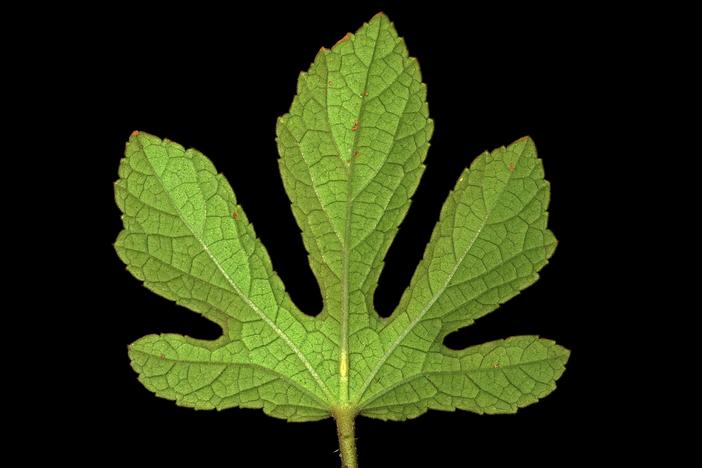Black-Stemmed Hibiscus
(Hibiscus nigricaulis)
Black-Stemmed Hibiscus (Hibiscus nigricaulis)
/
/

SAplants
CC BY-SA 4.0
Image By:
SAplants
Recorded By:
Copyright:
CC BY-SA 4.0
Copyright Notice:
Photo by: SAplants | License Type: CC BY-SA 4.0 | License URL: https://creativecommons.org/licenses/by-sa/4.0 | Uploader: SAplants | Publisher: Wikipedia Commons

























Estimated Native Range
Summary
Hibiscus nigricaulis, commonly known as Black-stemmed Hibiscus, is a deciduous shrub native to tropical Africa, specifically thriving in rainforest margins and along riverbanks. It exhibits a moderate growth rate, reaching heights of 6-10 feet (1.8-3 meters) and spreading 4-8 feet (1.2-2.4 meters) wide. The plant is characterized by its distinctive dark stems and bright yellow, showy flowers that bloom profusely in the summer and fall, adding a tropical flair to the garden. The foliage is typically green and heart-shaped, which contrasts nicely with the dark stems.
Black-stemmed Hibiscus is valued for its ornamental flowers and unique stem coloration, making it a striking addition to mixed borders, tropical-themed gardens, and as a specimen plant. It is relatively easy to maintain, requiring only occasional pruning to shape and encourage bushier growth. This hibiscus is adaptable to a range of soil types, including loam and clay, but it prefers consistent moisture and well-draining conditions. While it can tolerate partial shade, it will produce the most abundant and vibrant blooms in full sun. Gardeners should be aware that Hibiscus nigricaulis can be susceptible to pests such as aphids and whiteflies, and diseases like hibiscus rust, especially when grown in humid conditions. To prevent these issues, ensure good air circulation around the plant and avoid overhead watering.CC BY-SA 4.0
Black-stemmed Hibiscus is valued for its ornamental flowers and unique stem coloration, making it a striking addition to mixed borders, tropical-themed gardens, and as a specimen plant. It is relatively easy to maintain, requiring only occasional pruning to shape and encourage bushier growth. This hibiscus is adaptable to a range of soil types, including loam and clay, but it prefers consistent moisture and well-draining conditions. While it can tolerate partial shade, it will produce the most abundant and vibrant blooms in full sun. Gardeners should be aware that Hibiscus nigricaulis can be susceptible to pests such as aphids and whiteflies, and diseases like hibiscus rust, especially when grown in humid conditions. To prevent these issues, ensure good air circulation around the plant and avoid overhead watering.CC BY-SA 4.0
Plant Description
- Plant Type: Shrub
- Height: 6-10 feet
- Width: 4-8 feet
- Growth Rate: Moderate
- Flower Color: Yellow
- Flowering Season: Summer, Fall
- Leaf Retention: Deciduous
Growth Requirements
- Sun: Full Sun, Part Shade
- Water: Medium
- Drainage: Medium, Slow
Common Uses
Bird Garden, Border Plant, Butterfly Garden, Hummingbird Garden, Low Maintenance, Potted Plant, Showy Flowers
Natural Habitat
Rainforest margins and riverbanks
Other Names
Common Names:
Scientific Names: , Hibiscus nigricaulis, Hibiscus cannabinus, Hibiscus meeusei, Hibiscus sabdariffa,
GBIF Accepted Name: